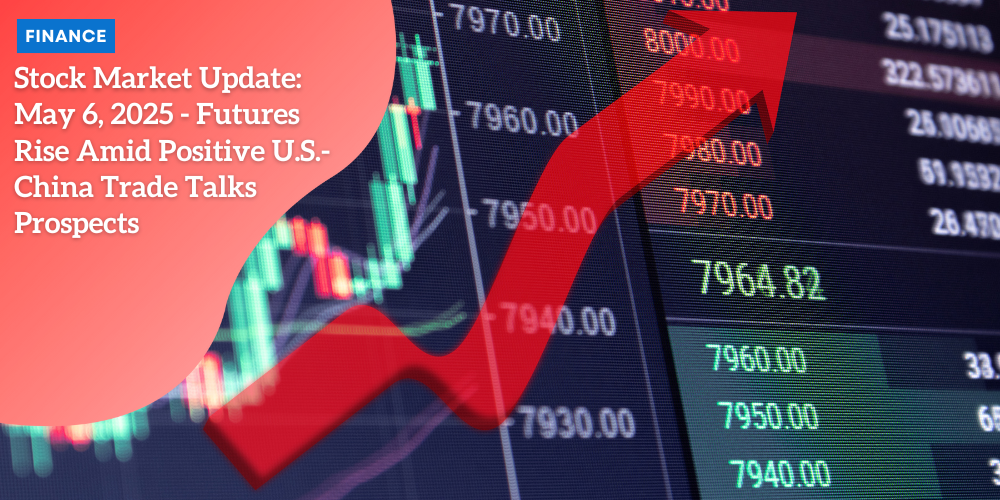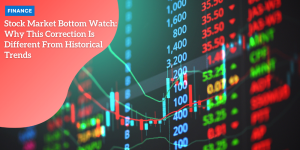Stock Market Update: May 6, 2025 – Futures Rise Amid Positive U.S.-China Trade Talks Prospects

Investors Optimistic as U.S. and China Plan Trade Discussions, Despite Recent Market Volatility
Stock-Index Futures Surge as U.S.-China Trade Talks Loom
Stock-index futures experienced an uptick late Tuesday following reports that high-ranking U.S. officials are preparing to travel to Switzerland on Thursday for crucial discussions with Beijing’s top economic representative.
Anúncios
The news brought a sense of relief to the market, as futures tied to the S&P 500 rose by approximately 0.8%.
The discussions may pave the way for broader trade negotiations between the world’s two largest economies, potentially alleviating the ongoing trade tensions that have affected the global market.
The positive news came after two consecutive days of stock declines, with gold prices reaching new heights, hitting a record as investors sought refuge from market volatility.
Anúncios
The stock market’s decline gained momentum after a contentious meeting between Canadian Prime Minister Mark Carney and President Donald Trump.
During their meeting at the White House, Carney firmly rejected any suggestions that Canada could be annexed by the U.S., a comment that contributed to a heightened sense of geopolitical uncertainty.
Market Performance Overview
The S&P 500, which represents a broader cross-section of the market, dropped by 0.8%.
Anúncios
The tech-heavy Nasdaq Composite also lost 0.9%, weighed down primarily by a post-earnings selloff in Palantir Technologies.
Despite the broader market downturn, investors remained on edge after the meeting between the U.S. and Canadian leaders.
The market’s mood reflected uncertainty, particularly with the looming threat of increased tariffs and a lack of substantial trade agreements being finalized.
On Monday, major companies such as Ford and Mattel announced they would suspend their annual guidance due to the ongoing uncertainty caused by tariff disputes.

Corporate Earnings and Tariff Impact
While Ford has less exposure to the effects of tariffs compared to some of its competitors, the automaker estimated that the additional tariffs could reduce its profits by as much as $1.5 billion.
Ford’s CEO emphasized that these numbers are significant, underscoring the substantial impact of the trade war on the company’s bottom line.
Despite these concerns, Ford’s stock rose 2.7% on Tuesday, signaling a glimmer of optimism for the company amidst the broader market’s struggles.
Toy maker Mattel, famous for its Barbie dolls and Hot Wheels cars, experienced a 2.8% increase in its stock value after announcing plans to raise U.S. prices on its toys.
However, the company is bracing for a tariff impact of $270 million, prompting Mattel to accelerate its efforts to relocate manufacturing operations out of China.
Corporate Earnings Reports Highlight Tariff Concerns
Several companies reported results early Tuesday, with mixed outcomes.
Cereal giant WK Kellogg and hospitality leader Marriott International both lowered their financial forecasts, attributing the downward revisions to the negative economic effects of tariffs and the broader macroeconomic uncertainties that are currently impacting global markets.
Meanwhile, shares of Clorox, the well-known cleaning-products manufacturer, declined by 2.4% after the company revised its guidance to account for the anticipated impact of tariffs on its operations.
These revisions highlight the growing concern among companies that the trade war and the uncertainty surrounding tariffs are starting to significantly affect their profitability.
| Topic | Details |
|---|---|
| 💊 Pharmaceutical Tariffs | President Trump to announce scope and timeline for pharmaceutical tariffs within two weeks |
| 📈 Potential Impact | Concerns over significant increase in drug costs if tariffs are imposed |
| 💰 U.S. Trade Deficit | Record-breaking $140.5 billion trade deficit in March due to increased imports |
| 📊 Economic Impact | Trade deficit exceeded economists’ forecasts, highlighting global trade concerns |
Federal Reserve and Treasury Yields
Investors are closely monitoring the Federal Reserve’s policy meeting, which began on Tuesday.
The central bank is expected to maintain interest rates, but investors are looking forward to comments from Federal Reserve Chair Jerome Powell on Wednesday.
Powell’s remarks will be scrutinized for clues about how the Fed is assessing the risks posed by tariffs, as well as the potential for an economic slowdown in the face of these challenges.
In the bond market, Treasury yields fell after the U.S. Treasury conducted a successful $42 billion auction of 10-year notes.
The auction attracted strong demand from investors, with non-mandatory bidders—those not required to participate in the auction—receiving 91.1% of the total bonds sold, the highest percentage for a 10-year auction since February 2023, according to BMO Capital Markets.
The yield on the 10-year Treasury bond settled at around 4.305%.
Despite initial fears that foreign demand for U.S. Treasurys might falter due to the ongoing trade tensions, a string of successful Treasury auctions has alleviated some concerns.
This renewed interest in U.S. debt securities reflects the broader market’s preference for safe-haven assets amidst heightened geopolitical risks.
Outlook for Investors
Looking ahead, investors will continue to navigate the complexities of the global trade environment, with the U.S.-China trade talks serving as a key focal point.
The potential for de-escalating tensions between the two economic giants could provide some much-needed relief for markets that have been battered by the uncertainty surrounding tariffs and trade agreements.
However, the path forward remains uncertain, and investors will need to remain vigilant, closely watching both domestic and international developments.
The impact of tariff-related uncertainties is expected to persist in the near term, affecting a wide range of industries, from automotive and retail to consumer goods and pharmaceuticals.
As companies continue to adjust to the evolving trade landscape, the long-term effects on global trade flows, economic growth, and corporate profitability will be crucial factors to monitor.
Conclusion
The news of upcoming U.S.-China trade talks brought a brief sense of optimism to the stock market on May 6, 2025, providing a glimmer of hope that tensions between the two nations might finally ease.
However, the broader economic environment remains challenging, with rising tariffs, a record trade deficit, and ongoing uncertainties about the future of global trade.
Investors will need to remain cautious as they track the evolving situation and adjust their strategies accordingly.
The Federal Reserve’s policy decisions, along with any new developments in the trade talks, will likely be key determinants of market performance in the weeks to come.





